We study Semiprecious stones, Gems, Minerals
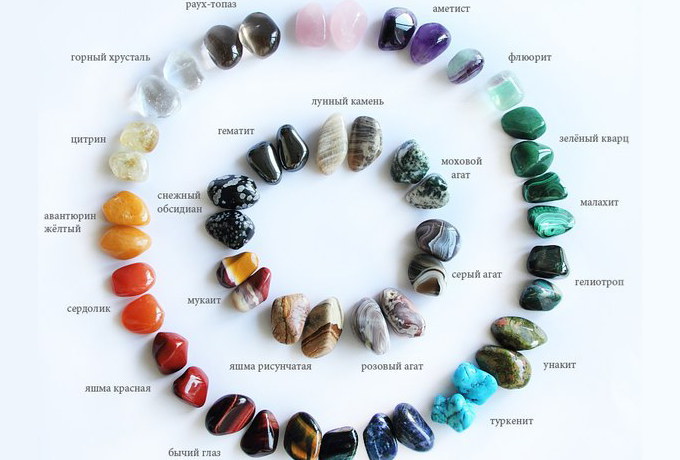
Kamnesamotsvetnoe raw materials - jewelry, jewelry and ornamental and ornamental stones, used for the production of jewelry and art products of applied value. Collective decorative materials are sometimes referred to as stone-colored raw materials.
Gems (from Russian and Tsvetnoi) - precious, semiprecious and ornamental stones (minerals and rocks), which are used as jewelry and ornamental raw materials. As a rule, they are transparent or translucent. The term gems is of a historical nature, it does not refer to scientific terminology and is not strict. At different times in everyday speech and speech, different specialists could relate to translucent or opaque stones, or used to divide by categories of color-colorless, border-decorative, precious-ornamental stones. The term was used in the Urals since the XVIII century, it was mentioned by M. I. Pyliaev, but it was widely introduced into practice due to the works of AE Fersman. According to Fersman's classification, gems are transparent stones, regardless of their classification as precious or semi-precious stones; Opaque minerals and rocks refer to "colored stones".
Precious stones, their physical and chemical properties
- Alexandrite - natural chrysoberyl and synthetic stones
- Diamonds and diamonds are the most highly advertised jewelry
- Pearls are the generous gifts of the tropical seas
- Emerald - dense green precious beryl
- Moonstone: adularia, white limb - transparent, white and blue stones
- Opal noble, black, fiery, cacholon
- Ruby - a noble corundum of red color
- Sapphire - noble corundum yellow and blue
- Chrysolite, demantoid - a green precious garnet
- Diamond cutting and types of cut jewelry stones
Gems and precious stones of Ukraine
- Agate is one of the most attractive gems of Ukraine
- Amazonite - green microcline, green stone of Scythian amazons
- Beryl - actually Ukrainian beryl, emeralds and aquamarines
- Gagat - "black amber" of the ancients or "black amber"
- Hematite and jaspilite - Ukrainian red-banded quartzite
- Gypsum, alabaster and anhydrite are popular ornamental minerals
- Wood fossilized and fossilized wood - original gem
- Pearls, mother-of-pearl and other petrified sea animals
- Crystal quartz - rhinestone , amethyst, citrine, morion
- Flint - a patterned and colored ornamental gem with a long history
- Labrador - stone flower of Ukraine, colorful peacock stone
- Opal ungovarit - green chloropal Carpathians and other opals of Ukraine
- Pyrophyllite or agalmatolite - a story from the Neolithic to our days
- Written granite - ancient letters and hieroglyphs of nature in pegmatite
- Carnelian - the legendary stone, the historical legends of carnelian
- Sodalite - cornflower cornflower, which deserves more attention
- Tiger, feline and falcon eyes from Volhynia and Krivoy Rog
- Topaz - the true beauty of Volyn land and the pride of Ukraine
- Tourmaline and its black variety of sherls from the Azov Sea
- Fluorite - "ore flower", beautiful and multicolored stone
- Black Sea route - the original Crimean green stone of the sea color
- Amber (burshtin) is a traditional subject of the Ukrainian fishery
- Jasper rainbow - a natural painting and a riot of colors in stone
- Other original stones and minerals found and mined in Ukraine
The articles given below and describing the physical and chemical properties of stones and minerals have been calculated already for more "advanced" stone lovers, and not for beginners. The materials below do not contain the magic and healing properties of the stones and may present some difficulties for beginners.
Popular gems are represented on the territory of the CIS (former USSR)
- Diamond is the hardest and one of the most expensive minerals in the world
- Alexandrite (chrysoberyl) - one of the rarest and original stones
- Beryl (group of beryl) - heliodores, emeralds, aquamarines, morganites
- Turquoise - blue and green precious stone of the East
- Granat (group of pomegranates) - popular inexpensive gems
- Jadeite is a popular stone used in the Neolithic
- Pearls - traditional and favorite decoration of the Slavs
- Quartz (a group of quartz) is an extremely popular mineral in collections
- Corundum (group of corundums ) - colorless corundums, rubies and sapphires
- Lazurite - blue stone of the high blue mountains of Pamir and Afghanistan
- Malachite - the Ural malachite is considered the best in the world
- Jade is the sacred green stone of Chinese emperors
- Feldspars - Labrador, Moonstone, Sun Stone, Amazonite
- Rodonit (orlez) - a beautiful pink stone of the Urals, a stone of Russia
- Topaz - blue, yellow, wine and polychrome minerals
- Tourmaline - original gems of all colors and shades
- Fluorite is a valuable mineral used in industry
- Chrysolite - magmatic mineral, transparent garnet olivine
- Spinel was relatively recently identified as an independent class
- Amber (fossil resin of ancient trees) - frozen time
- Jasper - an unusual mineral with a wide palette of coloring
Catalog of green stones and minerals
Catalog of red and dark pink stones
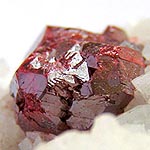 Cinnabar (poison) Cinnabar (poison)
|
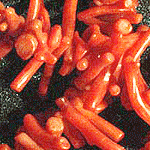 Corals Corals
|
 Pie (garnet) Pie (garnet)
|
 Ruby (corundum) Ruby (corundum)
|
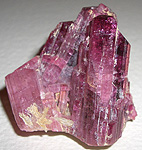 Rubellit Rubellit
|
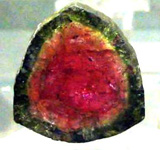 Tourmaline Tourmaline
|
 Spinel Spinel
|
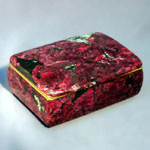 Eudialyte (!!) Eudialyte (!!)
|
Catalog of blue and dark blue stones
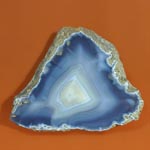 Agate Agate
|
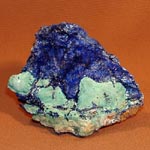 Azurite Azurite
|
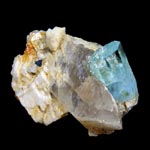 Aquamarine Aquamarine
|
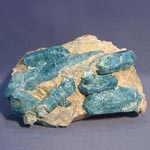 Apatite Apatite
|
 Turquoise Turquoise
|
 Hovlit, kaulit Hovlit, kaulit
|
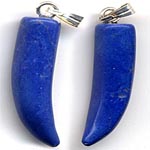 Dumortierite Dumortierite
|
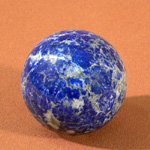 Lapis lazuli Lapis lazuli
|
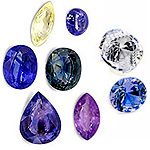 Sapphire Sapphire
|
 Sodalite Sodalite
|
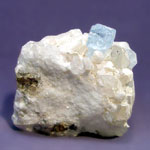 Topaz Topaz
|
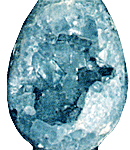 Celestine (poison + radiation) Celestine (poison + radiation)
|
Catalog of popular quartz stones
 Amethyst Amethyst
|
 Rhinestone Rhinestone
|
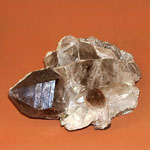 Rauchkwarz Rauchkwarz
|
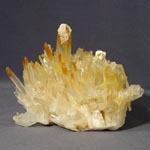 Citrine Citrine
|
Catalog of original stones and minerals
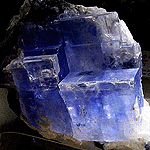 Galite (poison) Galite (poison)
|
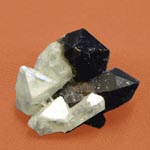 Morion Morion
|
 Pyrite Pyrite
|
 Staurolite Staurolite
|
Native elements. Very few elements are found in nature in a free form as "native". The ease with which metals and non-metals come into contact with other elements, especially with oxygen, causes them to be found in the earth's crust almost exclusively in a bonded form, as part of various compounds. Therefore, sometimes it is possible to extract an element using relatively simple operations and then use it in technology; Sometimes a complex and expensive process of isolating an element from compounds using a set of methods is required. Few elements that occur naturally in native form relieve the difficulties associated with separating them from other components (for example, as in the case of noble metals, including platinum), and from the negative environmental impacts that are encountered When working with some elements, whether metals or non-metals. A completely exceptional case is iron, which falls into the earth's crust in a native form in the composition of meteorites.
Sulphides includes sulfides (metal compounds and sulfur S) and other compounds related to them: selenides, tellurides, arsenides (poisonous compounds with arsenic As), antimonides and bismuthides. These include oxygen-free compounds formed by the combination of various metals with sulfur, selenium, and tellurium (having the chemical properties of nonmetals) and with semimetals-arsenic, antimony and bismuth. Currently, about 400 mineral species belonging to this class are known. However, they are mostly found in negligible quantities and are of exclusively scientific interest. But those that are described here are of economic importance. Different sulphides are an important and often the only source of items that are of utmost practical value and necessary for industry. Non-ferrous metals such as copper, lead, zinc, mercury, molybdenum, silver and many rare metals (tellurium, selenium, germanium, iridium, etc.) are obtained mainly during the processing of sulphides.
Halides (or halides) are chemical compounds formed by the combination of halogens and metals. In nature, the most common halogen is chlorine, followed by fluorine. Bromine and iodine are more rare. Chlorides and fluorides are represented by a number of minerals, while bromides and iodides in nature are few. Bromine is included only in a single, rather rare mineral - bromargyrite, and iodides know three mineral species. Fluorides are found in hydrothermal veins (fluorite) or, less often, in pegmatites (cryolite).
Chlorides are more numerous and include a number of fairly common minerals. They were formed as a result of evaporation of the waters of ancient seas or saline lakes (halite - common salt, carnallite) and, unlike fluorite, are absent among the vein minerals. Among the products of some volcanoes activity, it is also possible to detect some chlorides, both comparatively common (halite) and rarer species. A significant amount of chloride is formed during weathering of ore minerals under the influence of atmospheric factors. Among metals with chlorine, silver (kerargirite), lead, mercury and copper (attackamite) are most often associated.
Oxides and hydroxides. Oxygen is an element that is very common in the earth's crust. Therefore, it is present as the main component in most minerals. Most often it is simultaneously associated with two or more elements, one of which is a nonmetal, such as calcium sulfate (CaSO4, which forms gypsum and anhydrite.) From the chemical point of view, this substance is considered as a salt of sulfuric acid (H2S0J, and not as oxide Oxides are those compounds (in our case minerals) that were formed when oxygen was bound to one of the elements, predominantly by a metal (such as corundum-Al2O3), and also with several elements, provided that these compounds can not be considered as typical salts Many minerals, say perovskite (CaTiO3) or spinel (MgAl2O4), are considered in some classifications as oxides, and in others as titanates and aluminates.Hydroxides from other minerals of the considered class are distinguished by the presence, on the site of oxygen, of OH hydroxyl group.
Spinels (oxides). The spinel group includes oxides of the general formula X Y 2 O 4 , where X and Y are metals, respectively divalent (magnesium, iron, zinc and manganese) and trivalent (aluminum, iron and chromium). A variety of metals can combine in one mineral. In nature, pure compounds are very rare. Crystals spinels in cubic syngony, very often twinning occurs. Many spinels are primary products of magma crystallization and are therefore present in many intrusive rocks. They are also common in metamorphic rocks. The most common spinels: spinel proper, magnetite, chromite, franklinite, ganit.
Carbonates. Among the numerous minerals that make up the lithosphere, carbonates play an important role in terms of minerology, petrography and industrial development. They are part of many sedimentary, metamorphic and igneous rocks. Carbonates are the main components, firstly, limestone, consisting mainly of calcite (calcium carbonate); Then dolomites composed of calcium and magnesium carbonate; Finally, crystalline marbles, primarily sedimentary, but transformed by metamorphic processes, as a result of which their original structure changed in the process of complete recrystallization of calcium carbonate. Carbonates are widely used in industry. They are used as building materials, including finishing; As raw materials for ceramics and as refractories. Carbonates are also ores of many metals, including iron, magnesium, zinc, manganese, lead, barium, etc.
Sulfates are characterized by the presence of SO4 in the formula. In addition, the class includes tellurates, chromates, molybdates and tungstates (only in situ S are Te, Cr, Mo and W). As for their origin, it can be noted that some have a hydrothermal origin or formed during exhalations (steam and gas emissions) of volcanoes. Others have a sedimentary origin, mainly marine, the third represent secondary formations. Sulfates are extremely widespread in nature. Tellurates and chromates are extremely rare. Molybdates and tungstates, which are about fifteen, are relatively more common. Minerals of this group are not rock-forming. The exception is gypsum and anhydrite, composing huge in the area of thickness, monomineral in composition.
Phosphates . In this category, in addition to phosphates (minerals containing the PO4 group), arsenates and vanadates are also described (minerals containing AsO4 and VO4 groups.There are transitional forms between these compounds - from phosphates to arsenates, from arsenates to vanadates and, more rarely, from vanadates To phosphates.In the earth's crust, primary phosphorus is mainly present in apatite, which is distributed in almost all igneous rocks, in pegmatitic veins and in some ore deposits.The processes of weathering, dissolution and transport provide the accumulation of phosphates in soils and sea water.Living organisms extract Of which phosphorus is necessary for their existence.The aggregations of the remains of organisms and their excrement are deposits of great industrial importance.The arsenates and vanadates are mainly secondary minerals formed in deposits of complex composition enriched with sulfides, mainly arsenic and cobalt.
Silicates . Most of the lithosphere consists of silicates - very common minerals both among igneous and among metamorphic and sedimentary rocks. Their importance is great not only with mineralogical (including as ornamental, decorative and jewelry stones) and petrographic point of view, but also in terms of raw materials for various industries. Silicates always include silicon, combined with other elements, such as oxygen, aluminum, iron, manganese, magnesium, calcium and many others. They give rise to a multitude of minerals, often very complex in composition, which can often be easily determined without even using modern, highly sophisticated methods of investigation. It has already been noted above that silicon forms part of several different silica modifications, represented by quartz, tridymite, and cristobalite. They are considered in this book as oxides, but a number of authors consider them to be a class of silicates because of the great similarity of their structures with the structures of tectosilicates.
Structurally, in the crystalline lattice of silicates, each silicon ion of Si is located at the center of the tetrahedron, at each of the four peaks of which there is an oxygen ion O2. Together, the silica ion and the four oxygen ions surrounding it are a radical, or complex anion, a tetrahedral SiO4 + group. It is the main structural element of all silicates. Tetrahedra in the structure can be isolated - as in the case of nesosilicates; But they can also unite in various ways, creating other complex radicals. The combination of tetrahedra serves as the basis for the classification given below. The tetrahedra compound is formed by the oxygen ion common to two neighboring tetrahedra. In a situation where all four oxygen ions in a tetrahedron are common to it and the neighboring tetrahedra, there are no more free valences. Then no cation is able to join the complex radical unless one or more of the trivalent aluminum ions replaces one or more of the tetravalent silicon ions, thus releasing an additional negative valence. Aluminum in silicates can play a dual role. If it is part of the tetrahedra, that is, it is part of an anion radical, we are dealing with aluminosilicate. If it acts as a non-tetrahedral cation, then it is aluminum silicate. If aluminum performs both of these roles simultaneously, then we are talking about aluminum aluminosilicate. In the complex crystal lattice of silicates, there are often extra anions that are unusual for it, performing the task of compensating free valences. Often there is water, both in the form of hydroxyl, and in molecular form. In the latter case, it fills the channels of the crystal lattice, but its bonds with the lattice are very weak.
According to the latest scientific ideas on the structure of silicates, they, according to the method of grouping SiO4 tetrahedra, are divided into the following subclasses:
Nesosilicates (orthosilicates) are silicates with isolated or independent tetrahedra.
Sorosilicates (diororthosilicates) are silicates with isolated Si2O7 groups.
Cyclosilicates (ring silicates) are silicates with tetrahedra combined into triangular, quadrangular or hexagonal rings.
Inosilicates (chain silicates) are silicates with tetrahedra connected to simple or double chains.
Phyllosilicates (layered silicates) are silicates with tetrahedra combined into layers.
Tectosilicates (frame silicates) are silicates with tetrahedra connected in the form of three-dimensional structures.
Grenades (silicates) . A group of fairly common in nature minerals, often hardly distinguishable from each other. Their generalized formula can be written as: X3Y2 (Si04) 3, where X means calcium, magnesium, ferrous iron and manganese; Y is aluminum, trivalent iron, chromium, titanium, zirconium and vanadium. Garnets crystallize in cubic syngony, very often in the form of well-formed crystals, devoid of cleavage. Based on the presence of trivalent elements in the chemical composition, they can be divided into the following series: alumina-containing garnets (pyrope, almandine, spessartine, grossular); Iron-containing garnets (Fe3 +) - calderite, andradite; Chrome-containing garnets (uvarovite), garnets containing titanium, zirconium and vanadium (citeite, goldmanite).
Epidotes (silicates) . Epidotes are very important minerals from the point of view of petrography: being widespread elements of igneous and metamorphic rocks, they form isomorphic series of mineral species, each of which indicates the genesis of the rock in which it is found. The two main epidote are clinozoisite and the epidote itself. In the first, calcium and aluminum are combined, in the second, aluminum is partially replaced by iron. The group also includes piemontite and allanite, which are respectively manganese-bearing and cerium-containing epidotes. In addition, zoisite, which is a heteromorphic analog of clinozoisite (it crystallizes in another syngony, rhombic instead of monoclinic), is also referred to as epidote. Here it is described as a supplement to this group.
Pyroxenes (silicates) . A group of pyroxenes includes a large number of minerals, between which there are isomorphic series. From the point of view of the crystal structure, they are all monoclinic. An exception is the series of enstatite-hypersthene, whose representatives refer to rhombic syngony; To this row adjoins another, with identical chemical composition, but with a monoclinic syngony (clinoenstatite-clinohyperstene series). The remaining series: diopside-hedenbergite; Spodumene - jadeite - aegirine; Diallag - augite - fassaite. Isomorphous substitutions in pyroxenes are carried out in different structural positions, and different elements can enter into one and the same position, and in the same positions they are identical.
Amphiboles (silicates) . Amphiboles, like pyroxenes (with which the amphiboles have many common morphological and chemical features), belong to the subclass of inosilicates, but differ in the presence of SiO4 tetrahedra in the crystal lattice. Optical properties are diverse, and the chemical composition is rather complicated. In addition, they are distributed more widely and in larger quantities than pyroxenes. For amphiboles, an elongated-prismatic habit is characteristic; The cleavage, which manifests itself along the directions of the prism, is perfect. Like pyroxenes, amphiboles have monoclinic (a number of cummingtonite, actinolite, hornblende and glaucophane) and rhombic (anthophyllite) representatives.
Mica (silicates) . This group of filosilicates includes numerous and important minerals, which in terms of chemical composition can be defined as aluminum and alkali metal silicates, which also contain magnesium, iron, hydroxyl group and fluorine. If the number of aluminum, magnesium and iron ions is 2, these micas belong to a number of muscovite (paragonite, muscovite, glauconite, celadonite, luxuryite). If this number is 3, these micas belong to a series of biotite (phlogopite, biotite, annite, lepidolite, cinnivaldite). Mica crystallizes in the monoclinic syngony, usually in the form of elastic plates, of a small specific gravity, with pseudohexagonal or irregular outlines; They are characterized by perfect cleavage, which are very easily separated, with low hardness and a variety of colors. In nature, mica is very common and abundant: they can be detected as essential components in a variety of igneous and metamorphic as well as sedimentary rocks.
Chlorites (silicates) . These numerous minerals belong to the group of filosilicates. They have direct analogies with micas, but differ from them by chemical composition. Chlorites are characterized by high water content and complete or almost complete absence of alkalis. From a chemical point of view, they can be considered as silicates of aluminum, magnesium and iron, usually without an alkali metal impurity. Crystallize in the monoclinic system in the form of small irregular scales of pseudohexagonal outlines, with perfect cleavage resembling the cleavage of micas. Plates of chlorites, unlike micas, are flexible, but not elastic. Chlorites are often observed in the form of fairly dense scaly aggregates, massive powdery aggregates, thin-scaly grains and vermicular clusters of plates. For chlorites, widespread and abundant in nature, the green color of various shades is characteristic. Of the chlorites, pennin, clinochlor, and cammerite are considered.
Feldspars (silicates) . Feldspars are the largest and most famous group of minerals, which are the most important rock-forming components of rocks. They take part in the formation of a variety of breeds - both igneous, including both intrusive, and effusive, and crystalline schists and sedimentary rocks. From the point of view of the chemical composition, they are considered as aluminosilicates of potassium, sodium, calcium and, more rarely, barium, containing also impurities of other elements, such as lithium, cesium, rubidium, magnesium, iron, titanium, etc. The most significant members of this family are the result of a combination Three main components: potassium aluminosilicate, sodium aluminosilicate and calcium aluminosilicate. They are joined by a rare barium aluminosilicate, Celcian Albit and anorthite are the two extreme members of an isomorphous series of plagioclase, which also includes oligoclase, andesine, labradorite and bitovite. The plagioclases crystallize in two modifications, high-temperature and stable at low temperatures.
Feldspathoids (silicates) . A group of minerals, very similar in chemical composition to feldspar, is united under this name. It includes potassium, sodium, lithium and calcium aluminosilicates. Their crystal lattice may include extraneous anions such as SO4, CO3 and OH, water molecules and elements such as fluorine, chlorine. Some researchers do not recognize the existence of this group, which nevertheless includes about twenty minerals, from petalita to lapis lazuli.
Zeolites (silicates) . Zeolites are mineral species that can be defined as aqueous aluminosilicates of several alkali metals (such as sodium and potassium) and several alkaline earth metals such as calcium and barium, less often strontium and magnesium. From other silicates, they are distinguished by their ability to increase in volume and to boil on heating. This property was reflected in the name of zeolites (in Greek - "stone that boils"). It is related to the behavior when water is heated in the crystal lattice, but weakly bound to the crystal structure. Zeolites are minerals of secondary origin. They fill cracks in rocks and voids in the main igneous rocks of basaltic type. Zeolites are also found in geodes of granite rocks, in the form of cracks filled with mineral in gneiss rocks and sometimes in some ore-bearing veins of hydrothermal origin.
Usually zeolites are not used in the jewelry industry, however, the increasing role of these formations in engineering and medicine makes them truly precious. Not casually zeolites have received the figurative name "a philosophical stone of the XXI-st century". Zeolites - a whole family of minerals (water-containing aluminosilicates), including cations of potassium, sodium, calcium and magnesium. Their world production and consumption in 2000 alone exceeded 20 million tons. The term "zeolite" is translated from Greek as "boiling stone" and indicates a low melting point of this mineral. Since zeolites are peculiar "porous crystals", they are able to exchange ions with the environment. On this effect, their unique sorption properties are based. In medicine and the food industry, zeolites are used as food additives that are capable of removing harmful metabolites from the body without affecting proteins and other macromolecules. Some zeolites bind and remove from the body harmful substances that come with food, and supply it with trace elements necessary for normal physiological activity.
Organic substances . This group is represented by substances formed at the expense of organisms that lived in past geological epochs. They have become petrified over time (like amber) or replaced by different minerals (like silicified wood). In this sense, many diverse materials (including fossil coals) should be included here. In mineralogical classification, however, only those that are classified as precious or ornamental stones are considered.
| As | Actinium | Ag | Silver | Al | Aluminum |
| Am | Americium | Ar | Argon | As | Arsenic |
| At | Astat | Au | Gold | AT | Bor |
| Wa | Barium | Be | Berylium | Bi | Bismuth |
| Bk | Berkelium | Br | Bromine | FROM | Carbon |
| Ca | Calcium | Cd | Cadmium | Ce | Cerium |
| Cf | Californium | Cl | Chlorine | Cm | Curium |
| Co | Cobalt | Cr | Chromium | Cs | Cesium |
| Cu | Copper | Dy | Dysprosium | Er | Erbium |
| Es | Einsteinium | Eu | Europium | F | Fluorine |
| Fe | Iron | Fm | Fermium | Fr | France |
| Gd | Gadolinium | Ge | Germanium | H | Hydrogen |
| He | Helium | Hf | Hafnium | Hg | Mercury |
| Ho | Holmium | I | Iodine | In | Indium |
| Ir | Iridium | TO | Potassium | Kr | Krypton |
| La | Lanthanum | Li | Lithium | Lu | Lutetium |
| Lw | Lawrence | Md | Mendeleeviy | Mg | Magnesium |
| Mn | Manganese | Mo | Molybdenum | N | Nitrogen |
| Na | Sodium | Nb | Niobium | Nd | Neodymium |
| Ne | Neon | Ni | Nickel | No | Nobelium |
| Np | Neptunium | O | Oxygen | Os | Osmium |
| P | Phosphorus | Pa | Protactinium | Pb | Lead |
| Pd | Palladium | Pm | Promethium | Po | Polonium |
| Pr | Praseodymium | Pt | Platinum | Pu | Plutonium |
| Ra | Radium | Rb | Rubidium | Re | Rhenium |
| Rh | Rhodium | Rn | Radon | Ru | Ruthenium |
| S | Sulfur | Sb | Antimony | Sc | Scandium |
| Se | Selenium | Si | Silicon | Sm | Samarium |
| Sn | Tin | Sr | Strontium | The | Tantalum |
| Tb | Terbium | Tc | Technetium | Those | Tellurium |
| Th | Thorium | Ti | Titanium | Tl | Thallium |
| Tu | Thulium | U | Uranus | V | Vanadium |
| W | Tungsten | Xe | Xenon | Y | Yttrium |
| Yb | Ytterbium | Zn | Zinc | Zr | Zircon |
| Ga | Gallium |
Via jewelery.org.ua, geokniga.org, mmus.geology.pu.ru, mirkamney.moy.su, kristallov.net, webmineral.ru, geo.web.ru, catalogmineralov.ru, mindraw.web.ru, mining -enc.ru, wiki



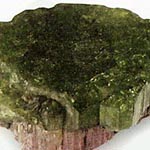
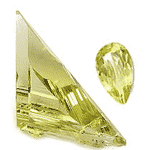

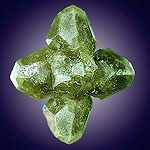
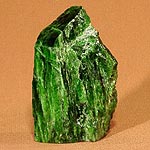
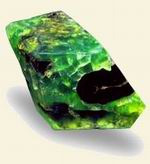
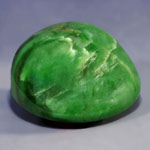
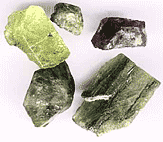
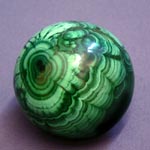
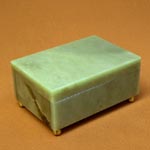
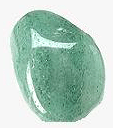
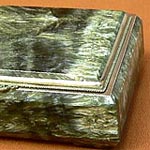
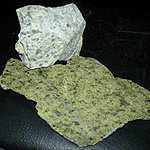
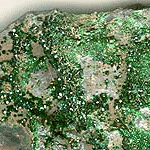
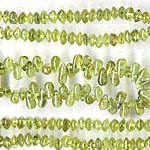
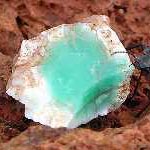
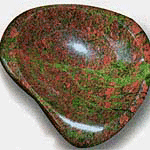
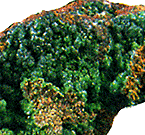

Comments
When commenting on, remember that the content and tone of your message can hurt the feelings of real people, show respect and tolerance to your interlocutors even if you do not share their opinion, your behavior in the conditions of freedom of expression and anonymity provided by the Internet, changes Not only virtual, but also the real world. All comments are hidden from the index, spam is controlled.